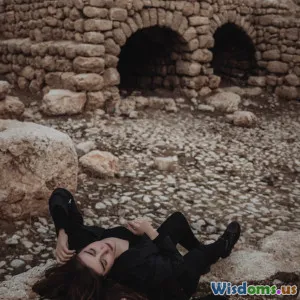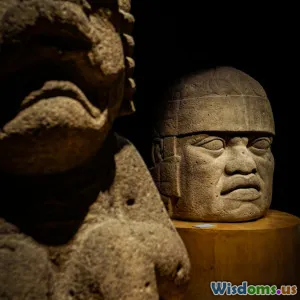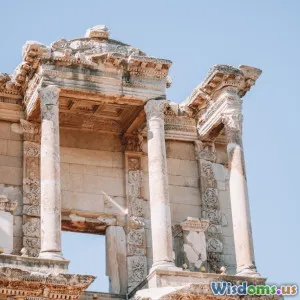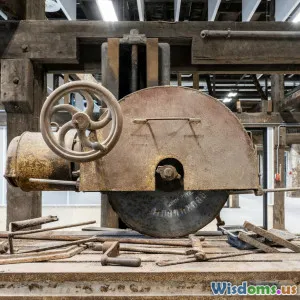
Exploring Recently Discovered Ancient Tunnels Under Jerusalem
7 min read Discover the secrets of newly found ancient tunnels beneath Jerusalem and their impact on archaeology and history. (0 Reviews)
Exploring Recently Discovered Ancient Tunnels Under Jerusalem
Jerusalem, a city rich in history and spiritual significance, continues to surprise archaeologists and historians alike. Recent discoveries of ancient tunnels beneath its surface have shed new light on the complex web of subterranean structures dating back thousands of years. These tunnels not only reveal the ingenuity of ancient civilizations but also provide vital clues about Jerusalem's cultural, strategic, and religious past. This article delves into the story behind these remarkable discoveries and explores their archaeological significance.
Unearthing the Underground Labyrinth
The discovery of ancient tunnels beneath Jerusalem did not happen overnight. Archaeologists have long suspected subterranean networks existed due to medieval writings and historical references. However, it was only through advanced excavation techniques and careful surveying within the Old City and adjacent areas that several tunnels were confirmed and mapped recently.
Historical Context of Jerusalem’s Underground
Jerusalem’s unique geographical location made it a crossroads of civilization for millennia. Defended by conquering empires and bustling with thriving cultures from Biblical times through the Byzantine and Ottoman eras, it accumulated numerous layers of occupation. Many ancient cities across the globe—like Rome or Athens—developed intricate underground passages for defense, water supply, or ceremonial purposes. Jerusalem appears to be no exception.
Anatomy of the Newly Discovered Tunnels
Construction Techniques and Materials
The tunnels, carved primarily out of limestone—common to the Judean hills—demonstrate advanced craftsmanship for their time. Tools made of harder stones and metals were used to hew these passages. In some segments, smooth walls hint at deliberate shaping, possibly to facilitate movement or acoustics.
Tunnel Purposes: Defense, Water, and Ritual:
-
Defensive Pathways: Some tunnels likely served as secret escape routes during sieges. The presence of narrow corridors and multiple exits suggests strategic design for evasion.
-
Water Systems: Archaeologists uncovered channels connecting to ancient cisterns and underground reservoirs. These water tunnels would have provided critical hydration during dry seasons or prolonged attacks.
-
Ceremonial Use: Certain sections correlate with ritual baths (mikveh) and other religious practices, giving insight into the spiritual life of Jerusalem's diverse communities.
Archaeological Techniques and Technology
Archaeologists combined classical methods such as stratigraphy with modern technology, including:
- Ground-penetrating radar (GPR): Helped detect voids without disturbing layers.
- 3D laser scanning: Created accurate models of complex tunnel geometries.
- Carbon dating and material analysis: Precisely dated wooden supports, pottery fragments, and organic remains found inside tunnels.
These tools revealed that some tunnels date back more than 2,500 years, potentially to the First Temple period (10th–6th century BCE), while others were expanded or repurposed during the Roman or Crusader periods.
Historical Insights Gained
Life Under Siege
The tunnels provide physical proof of Jerusalem’s inhabitants preparing for repeated sieges. Historical texts such as Josephus’ accounts of the Roman siege in 70 CE describe hidden passages used for covert movement. The physical evidence enhances our understanding of how citizens lived through these turbulent events.
Religious Practices and Cultural Exchange
Artifacts recovered—ceramics, inscriptions, coins—suggest that these tunnels connected areas important to Jewish, Christian, and perhaps early Islamic communities, underscoring Jerusalem’s pluralistic heritage.
These diverse finds highlight the city’s dynamic character through different epochs.
Link to the Biblical Narrative
While archaeology cannot prove specific biblical events, the tunnels align with descriptions of ancient infrastructure supporting Jerusalem’s biblical-era cityscape, offering a tangible backdrop for theologians and historians exploring scripture within historical contexts.
Challenges and Future Research
Studying these tunnels is not without difficulty. Urban development above limits excavation options, and political sensitivities in Jerusalem complicate logistics. Preservation challenges arise as tunnels potentially collapse or flood.
Ongoing projects aim to integrate these tunnels into educational tours and museums, providing the public with immersive historical experiences while safeguarding the delicate subterranean environment.
Conclusion: Unearthing Jerusalem’s Hidden Past
The discovery of ancient tunnels beneath Jerusalem opens a fascinating window into the city’s multifaceted history—reflecting defensive ingenuity, religious devotion, and daily survival across millennia.
Each stone carved beneath the surface contributes to a rich archaeological puzzle, inviting scholars and enthusiasts alike to reconsider the layers of human endeavor hidden below this legendary city.
As excavation progresses and technology evolves, Jerusalem's underground secrets promise to reshape our understanding of ancient civilizations and the enduring mysteries they left behind.
References:
-
Rachel Hallote, “The Underground Jerusalem: Historical Evidence and Contemporary Discoveries,” Journal of Near Eastern Studies, 2023.
-
Israel Antiquities Authority reports on recent excavations.
-
Josephus, The Jewish War, 1st century CE.
-
Ground-Penetrating Radar Studies in Jerusalem, University of Tel Aviv, 2022.
This exploration emphasizes how beneath Jerusalem’s bustling streets beats a labyrinth of history, waiting to enlighten the world.
Rate the Post
User Reviews
Popular Posts





















